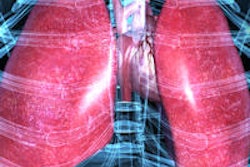Dear AuntMinnie Member,
What's the best way to set up a radiation dose monitoring program at your imaging facility? Well, it's going to take more than just buying dose management software, according to a July 27 webinar co-sponsored by the Society for Imaging Informatics in Medicine (SIIM) and the European Society of Medical Imaging Informatics (EuSoMII).
The presentation featured Dr. Tessa Cook, PhD, of the University of Pennsylvania, who surveyed the changing regulatory landscape of radiation dose reporting and what facilities need to do to comply with new rules and regulations. She believes that a key element for any program is a personal touch, from staff members who are familiar with the ins and outs of their CT scanners -- such as when protocols change -- to a radiation dose monitoring committee that can oversee the program.
Learn more about how to set up and run your dose management program by clicking here.
COPD and lung cancer
Should individuals with severe chronic obstructive pulmonary disease (COPD) be included in CT lung cancer screening programs?
It's a controversial question, as people with COPD are not covered under the guidelines issued by the U.S. Preventive Services Task Force, which in turn guides Medicare coverage decisions. But new research indicates that this approach should be reconsidered.
Researchers from the U.S. and New Zealand found that people with the highest levels of COPD had twice the incidence of lung cancer compared to people with normal lung function. Learn more by clicking here, or visit our CT Community at ct.auntminnie.com.
NM training for radiologists
Finally, be sure to visit our Molecular Imaging Community for this article on how specialized training in nuclear medicine affected the interpretations skills of an Ohio radiologist, compared with three body imaging radiologists, for interpreting PET/CT scans.




















